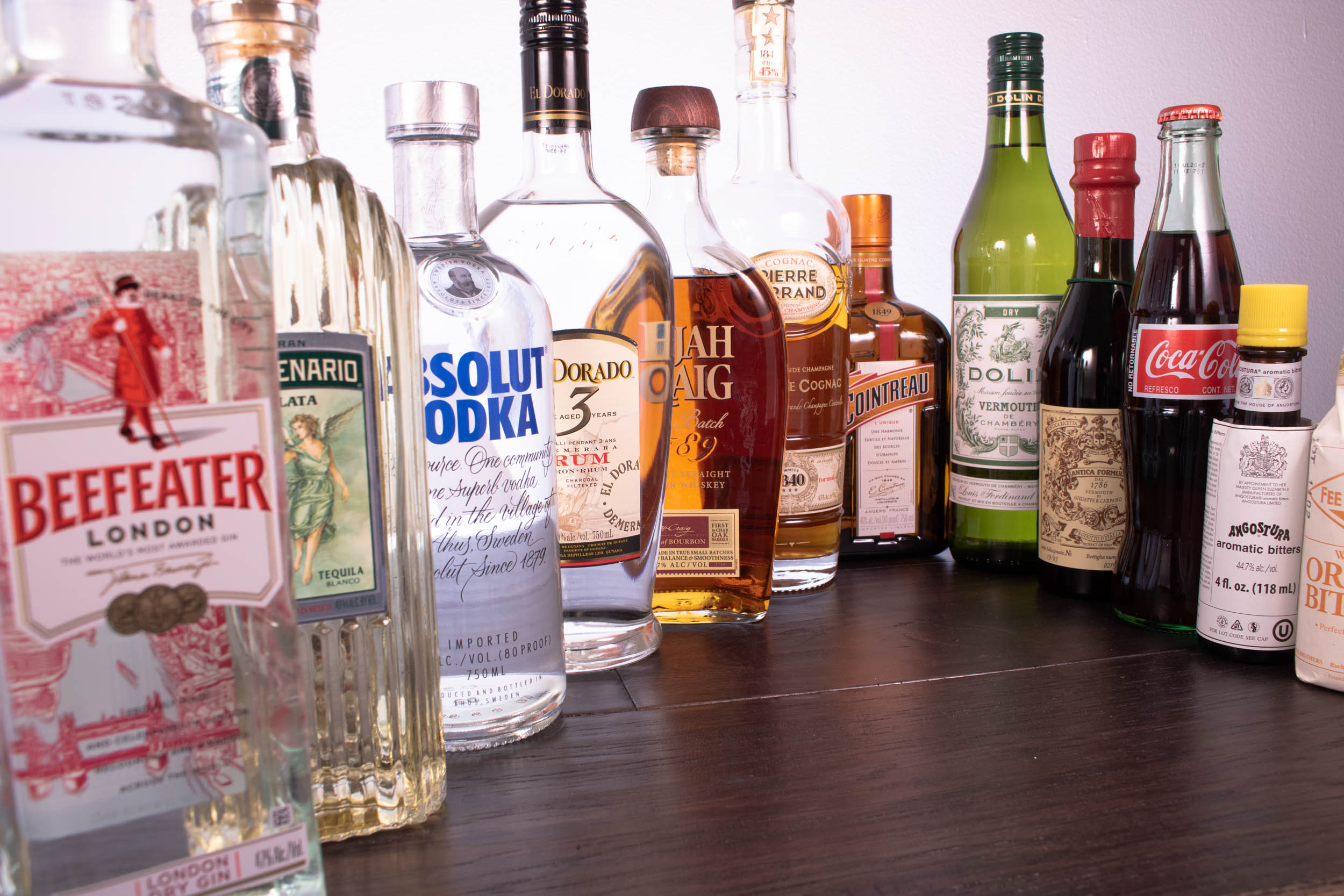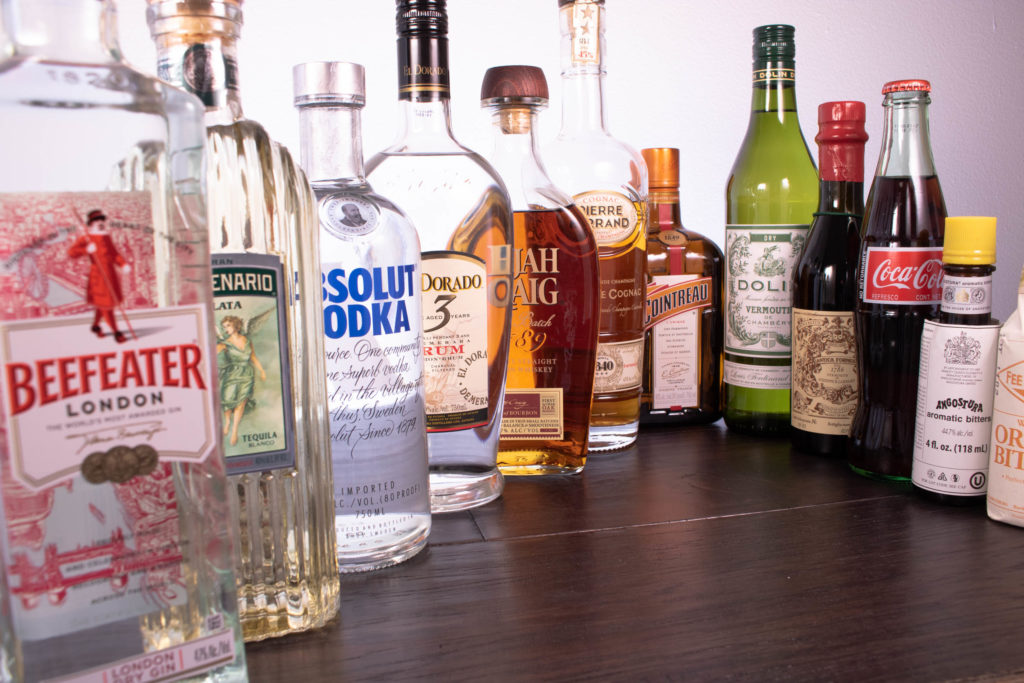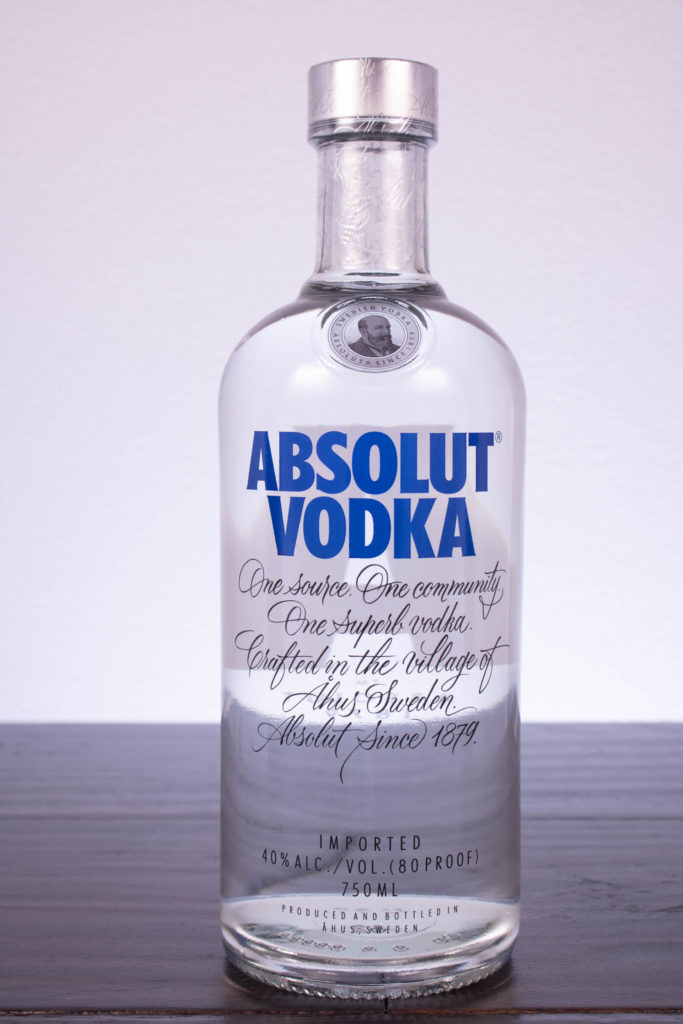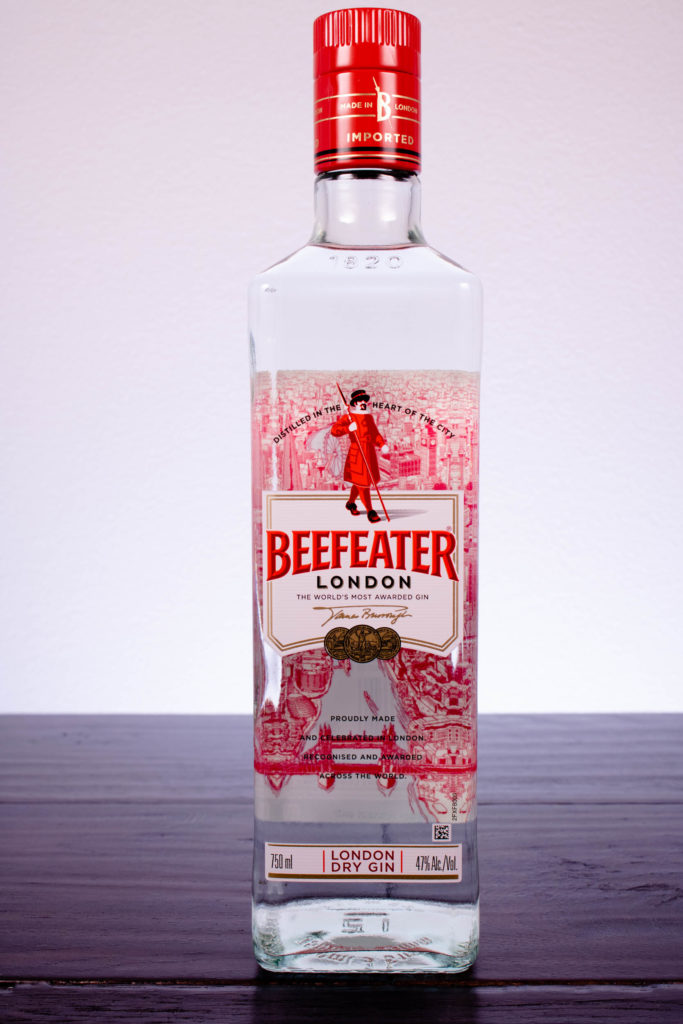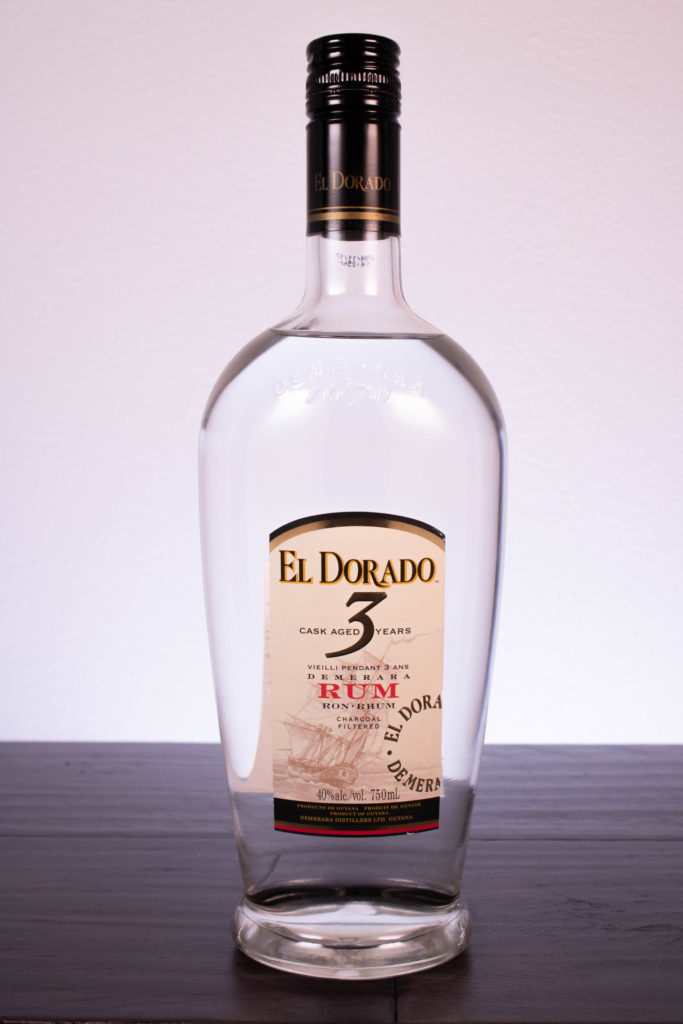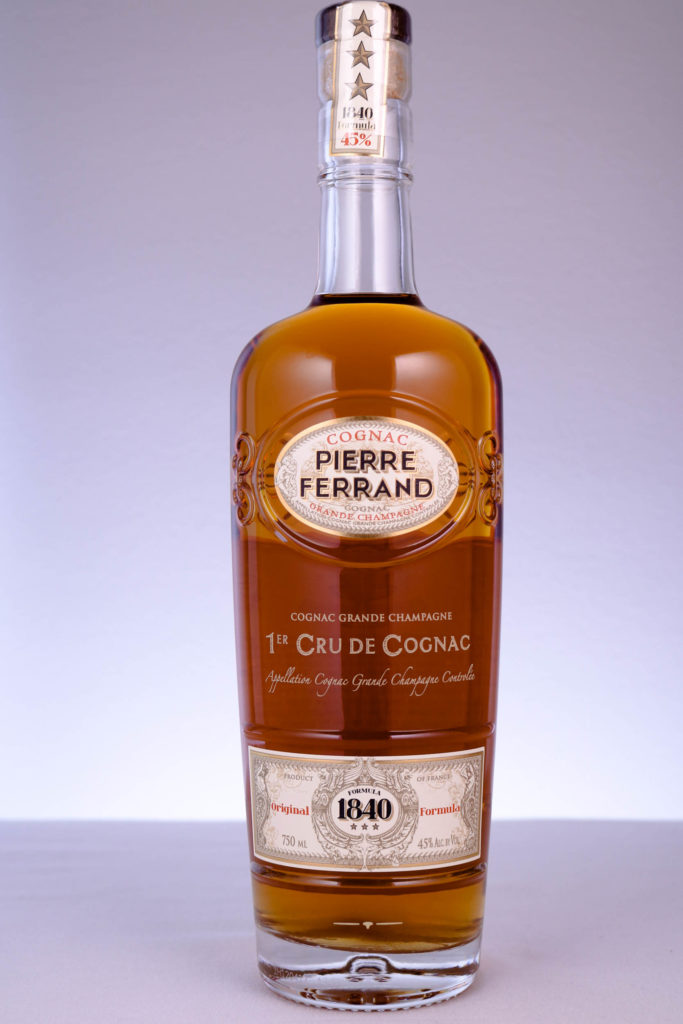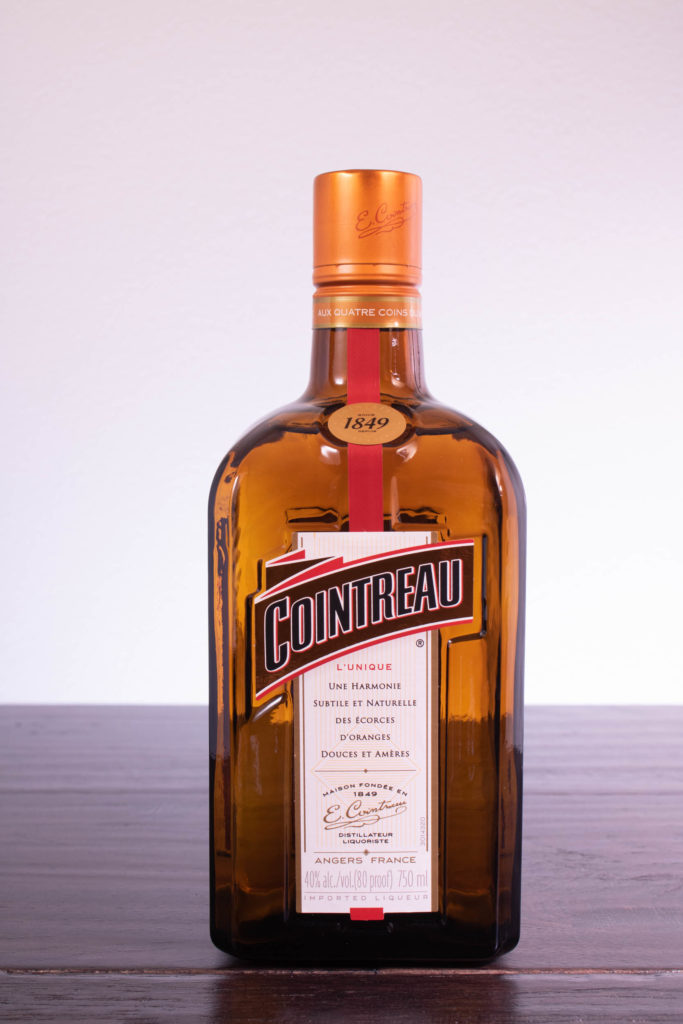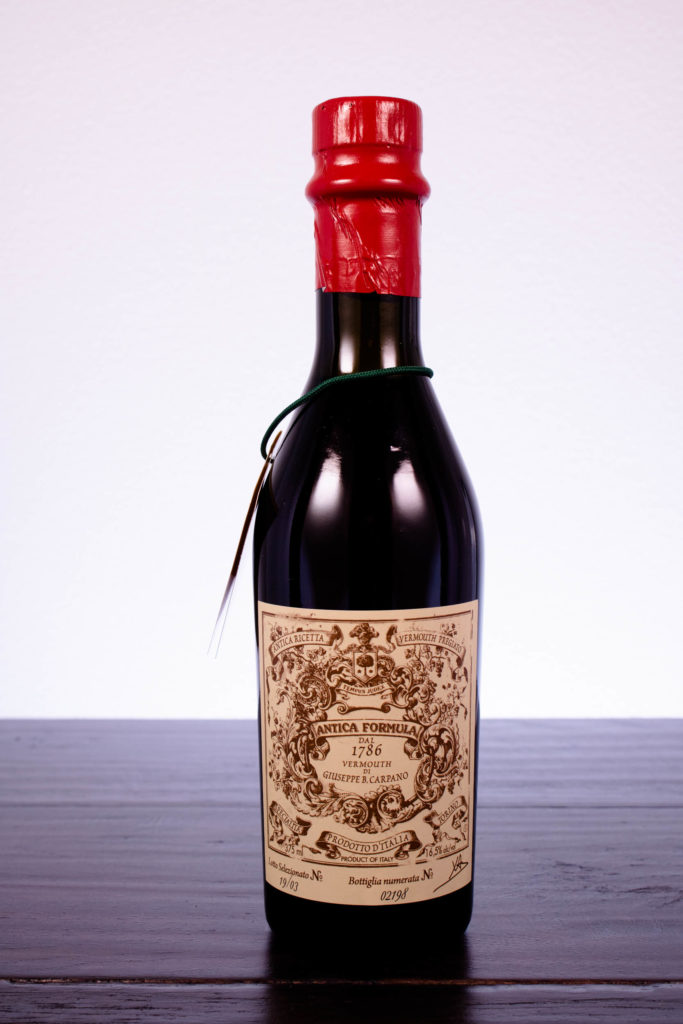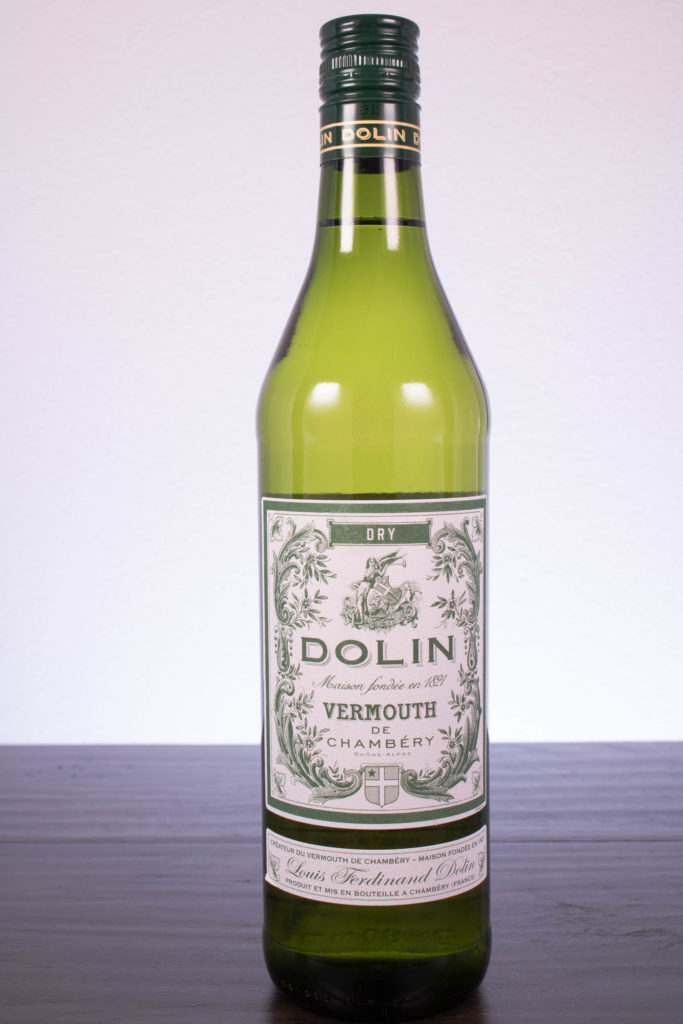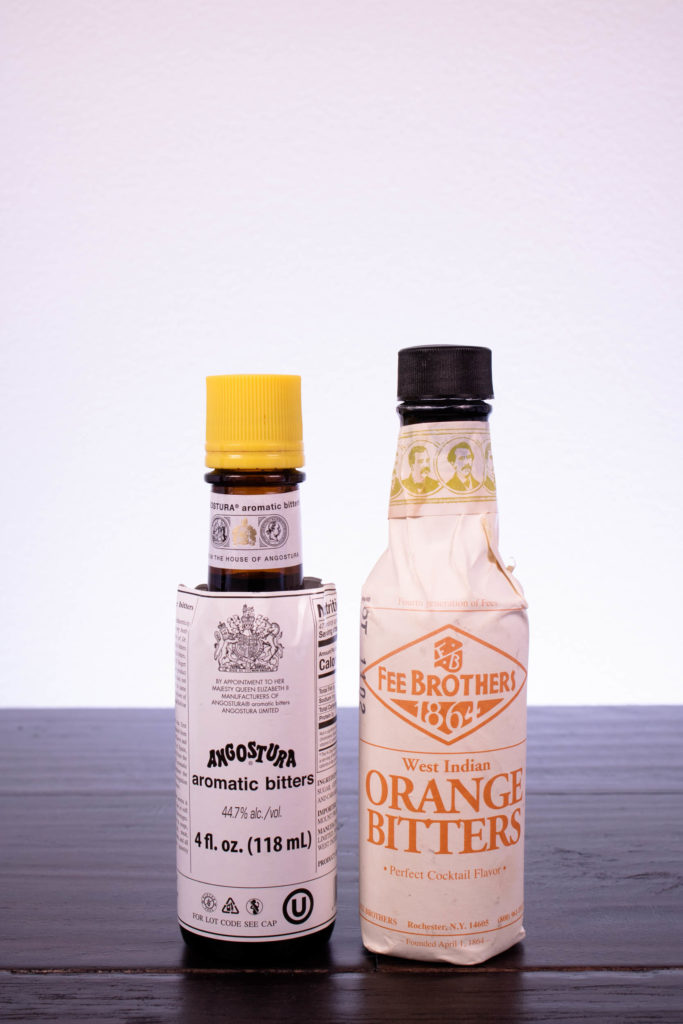This post contains affiliate links which may result in us getting a partial commission from the sale. These links are marked with an (*). In 2022 we made a whopping $13.34 from affiliate links and have made $6.93 so far in 2023 (as of August). We’ve spent well over $200 on just webhosting, and this doesn’t even include our drink ingredients or glassware. Help us keep the lights on if you like our content, and please use our links if you’re considering buying something! Thank you!
The first time I opened Death & Co’s cocktail book* I was probably able to make less than 10 of the drinks. To remedy this for others beginning their journey, I wanted to put together a list of recommended bottles for beginning a home bar. While I can’t guarantee that if you have every bottle on this list that you’ll be able to make every cocktail you want – it will help you get to most of the classics.
Bottles for Beginning A Home Bar
To start with, we’re going to need some base liquors. You won’t need all of these, but these are the bottles that you will require to make the cocktails on the list below. While the sky is the limit, we limited this table to our recommendations that offer value for their price. All prices are based on Ohio’s prices (if available in the state) as of August 2023 and do not include tax.
In addition, these aren’t the only bottles we recommend, check the sections below for information on alternate bottles if these don’t fit your price range or are unavailable in your area.
| Ingredient | Recommended Bottle | Cost |
|---|---|---|
| Vodka | Absolut Vodka | $20 |
| Gin | Beefeater London Dry Gin | $18 |
| Rum | El Dorado 3 | $21 |
| Tequila | Siete Leguas Blanco | $40 |
| Brandy / Cognac | Pierre Ferrand 1840 Cognac | $42 |
| Bourbon | Wild Turkey 101 | $23 |
| Orange Liqueur | Cointreau | $40 |
| Sweet Vermouth | Carpano Antica | $22 |
| Dry Vermouth | Dolin Dry Vermouth | $20 |
| Angostura Bitters | Angostura | $10 |
| Orange Bitters | Regans’ Orange Bitters No.6 | $12 |
| Total Cost | Liquors and Modifiers | $268 |
Other Ingredients You Will Need To Start Your Home Bar
Many of these ingredients are often things you have around your house to start with, but as we’re starting from scratch, we wanted to list everything. Some items can have their price reduced by purchasing in larger quantities (such as lemons, limes, sugar, etc), but we general picked quantities that won’t spoil if you’re more casually using them.
| Ingredient | Recommended Brand (if applicable) | Cost |
|---|---|---|
| Simple Syrup | Homemade | $1 |
| Citrus | Lemons, Limes, Oranges (individual vs. package) | $3-$20 |
| Pineapple Juice | Dole – Small Cans | $6 |
| Cherries | Fabbri Amarena | $20 |
| Ginger Beer | Gosling’s Ginger Beer (6 pack) | $8 |
| Cola | Coca Cola (12 pack) | $5 |
| Tonic Water | Generic (1L) | $1 |
| Club Soda | Generic (1L) | $1 |
| Kitchen Basics | Honey, Sugar, Salt | $10 |
| Total Cost | Juices, Sodas, Garnish, Syrups | $55-$72 |
Total Ingredient Cost to Initially Setup Your Home Bar
The table below will help you evaluate the total cost to set up the ingredients for your home bar as of August 2023. While it looks expensive, remember one bottle of liquor will typically contain enough for 12 cocktails. So the cost of going to a bar quickly adds up over the cost of making a drink at home. In addition, don’t feel the need to buy all of these items at once. If you enjoy making Manhattans and your partner enjoys Margaritas, start with Bourbon, Tequila, Cointreau, Sweet Vermouth, Limes, Bitters, Simple Syrup (or Agave), and Cherries – but skip the Cognac, Vodka, Dry Vermouth, and other things that you won’t use.
| Ingredients | Cost |
|---|---|
| Liquors and Modifiers | $268 |
| Juices, Sodas, Garnish, Syrups | $55-$72 |
| Total Home Bar Setup Cost | $323-$340 |
Cocktails You Can Make
- Martini – Gin – Dry Vermouth – Orange Bitters
- Kangaroo – Vodka – Dry Vermouth – Orange Bitters
- Daiquiri – Rum – Simple – Lime
- Margarita – Tequila – Lime – Orange Liqueur – Simple
- Old Fashioned – Bourbon – Sugar / Simple – Bitters
- Sidecar – Cognac – Lemon – Orange Liqueur
- Manhattan – Bourbon – Sweet Vermouth – Angostura Bitters
- Bebbo – Gin – Lemon – Honey – Orange Juice
- The Derby – Bourbon – Sweet Vermouth – Orange Liqueur – Lime Juice
- Tom Collins – Gin – Lemon Juice – Simple – Club
- Whiskey Sour – Bourbon – Lemon – Syrup – Club
- White Lady – Gin – Cointreau – Lemon Juice
- Cuba Libre – Rum – Coke – Lime
- Fitzgerald – Gin – Lemon – Simple – Angostura
- Gin Rickey – Gin – Lime – Simple – Club
- Moscow Mule – Vodka – Lime – Ginger Beer
- The Income Tax Cocktail – Gin – Sweet Vermouth – Dry Vermouth – Orange Juice – Bitters
- Gin & Tonic – Gin – Tonic
- Saratoga Cocktail – Cognac – Bourbon – Sweet Vermouth – Bitters
- Highball – Bourbon (Whiskey) – Club
Equipment to Start Your Home Bar
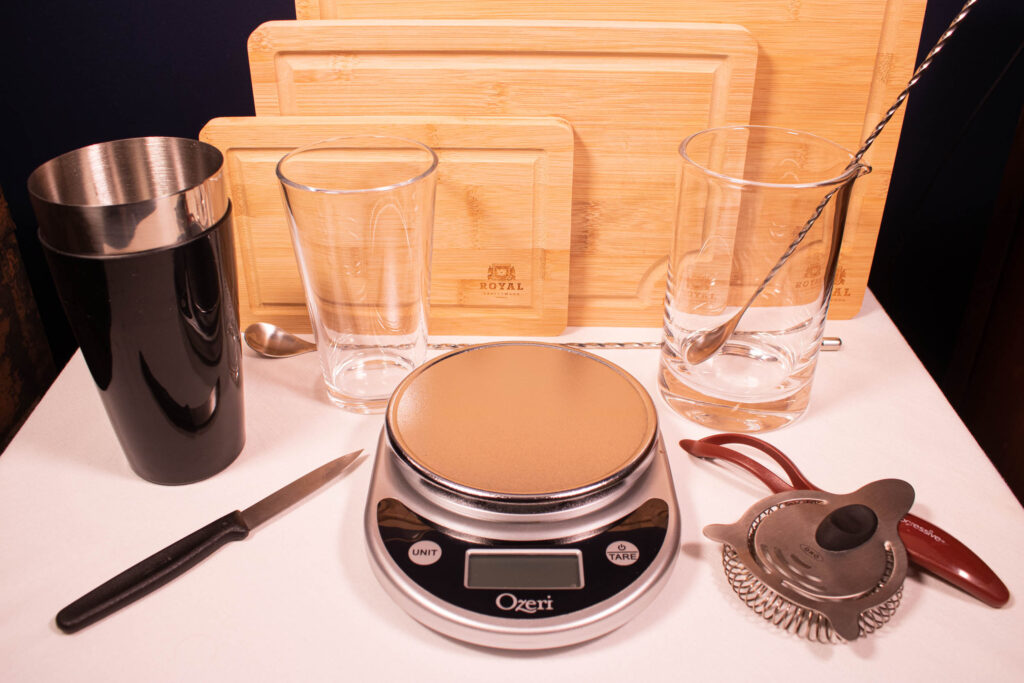
While you could go crazy buying equipment, you don’t need that much to get started. Below is the basic list, but head over to our Recommended Equipment for Starting Your Home for detailed recommendations.
- Scale
- Boston Shaker
- Mixing Glass
- Bar Spoon
- Hawthorne Strainer
- Chinois (depending on your ice) – Also known as a conical strainer or fine mesh strainer.
- Citrus Juicer
- Paring Knife
- Vegetable Peeler
- Cutting Board
- Sauce Pot
In addition to the required equipment, you should also have certain glassware, including a coupe, a Collins, and a double rocks glass. For immediate expansion, buy yourself a martini glass.
Recommended Bottles for Beginning A Home Bar
So what bottles should you buy? Thanks to the many regulations and distribution networks across the country, this is actually a somewhat difficult question to answer. What’s available in New York, might not also be available in North Carolina due to the ABC purchasing system. That said, we’ll do our best to give you recommendations and alternatives. The list will be fluid, and has a complete update history located at the bottom.
Vodka
A staple in most bars – vodka is a clear, unaged spirit that takes its flavors directly from the distillation methods and materials. As vodka sells pretty well – it’s usually widely available. While these are our recommendations for bottles for beginning a home bar, feel free to substitute your favorite non-flavored vodka.
Absolut Vodka: We prefer the slightly more viscous body of Absolut and find the ethanol and subtly sweet notes complement well.
Alternative – Tito’s, Sobieski, Absolut Elyx (splurge), Summum
Gin
There are multiple kinds of gin. For the sake of a basic bar setup – the focus is on London Dry style gin (which is the gin most people think of when they think of gin).
Beefeater London Dry Gin: A heavy juniper note serves as the background here with a healthy mix of botanicals and hints of floral notes. A quintessential gin.
Alternative: Bombay Sapphire London Dry Gin, Tanqueray London Dry Gin
Rum
Rum is one of the few liquors on the list that have good reason for multiple interpretations of it in your home bar. A lightly aged rum may carry more vanilla, light tropical fruits, and sugar cane compared to an aged rum, which may contain more flavors of brown sugar, caramel, oak, and spice. As a result, you may eventually find the need for both light rums and dark rums in your home bar – especially if you find yourself drawn to tiki drinks.
When setting up a beginner’s home bar, we recommend you stick to one. While you can choose what degree of aging you want – we’d recommend going lighter – which will play well in the cocktails above.
Light Rums
El Dorado 3: This is by far and away our gold standard. A light vanilla greets the nose and is complemented by hints of cotton candy and tropical fruit.
Alternatives: Plantation 3 Star, Bacardi Maestro Di Ron
Rum – Aged / Black Blended
Appleton Reserve – At least in the state of Ohio, there is a $2 difference in price between this and Appleton Signature. The quality difference is notable, and worth the extra $2. There’s a tuned down character to the molasses and treacle funk that exists in the signature, and it’s replaced with a caramelized banana and toasted brown sugar character.
Alternative: El Dorado 8 (aged), Doorly X.O. (aged), Goslings Black Seal Rum(Black)
Tequila – Blanco or Reposado
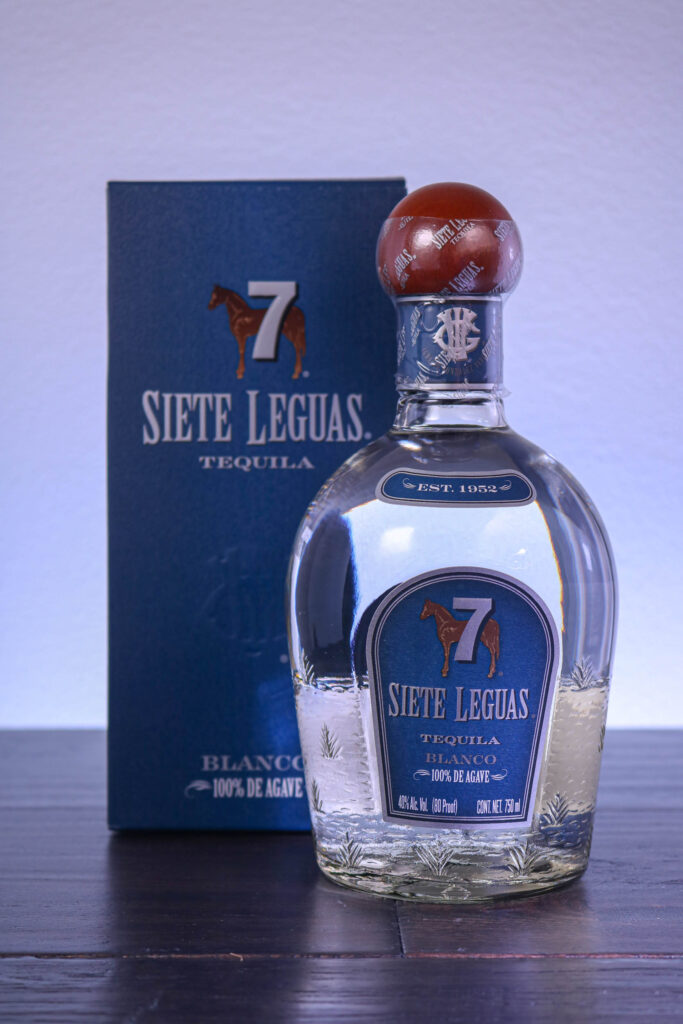
Similar to rum, Tequila has enough distinction between it’s unaged version (sometimes called Blanco or Silver) and it’s aged version (Reposado) to merit separate bottles for your bar. Again – for the sake of just setting up – we’re going to stick with an unaged version here.
Avoid anything Mixto – stick to 100% agave.
Siete Leguas Blanco – If money isn’t a big deal to you, than the $10-15 rift to Siete Leguas Blanco is certainly worth it to stock your bar with. The nose is perfumed with spices and smooth agave notes. On the palate it dances gracefully, with touches of floral and nutty notes mixed with agave. Sipping is slightly spice and the ending has a touch of woodiness and hints of cigar box and vanilla.
Olmeca Altos Plata – Between availability and the cleaner cask profile (not using Limousin Oak), Olmeca Altos Plata makes a cleaner drink with good elements of roasted pepper, citrus, and earthiness. The price is good in the mid-$20, and it takes our top recommendation.
Alternatives (Blanco): Gran Centenario Plata, Pasote Blanco (splurge)
Recommended Tequila (Reposado): Siete Leguas Reposado (splurge), Olmeca Altos Reposado
For more on all these tequilas, check out our 2021 Cinco de Mayo roundup
Brandy / Cognac
For the sake of your bar – you really only need one of these to start. If you’re feeling classy and flush – go for the cognac. You’ll get better quality for your dollar, make better cocktails, and feel less guilty partaking in it neat or when you substitute brandy into a recipe calling for Cognac.
Cognac: Pierre Ferrand 1840 Cognac – A healthy mix of vanilla, caramel, touches of dried pear and hints of spice. Bare in mind – this product was supposedly designed for cocktails. For more of a sipper that also works – looks for the Pierre Ferrand Ambre.
Brandy: Lustau Brandy de Jerez Solera Reserva – Dollar for dollar Lustau Brandy de Jerez Solera Reserva packs more flavor than anything we’ve tried pre-cognac. A subtly sweet brandy with a beautiful mix of caramelized sugars, dried fruits, cotton candied notes, and touches of grapes and earthiness make this a stand out.
Alternative – Christian Brothers VS Brandy – sure it’s not the most interesting – but it will give you touches of vanilla, oak, hints of preserved fruit and a little burn
Whiskey – Bourbon:
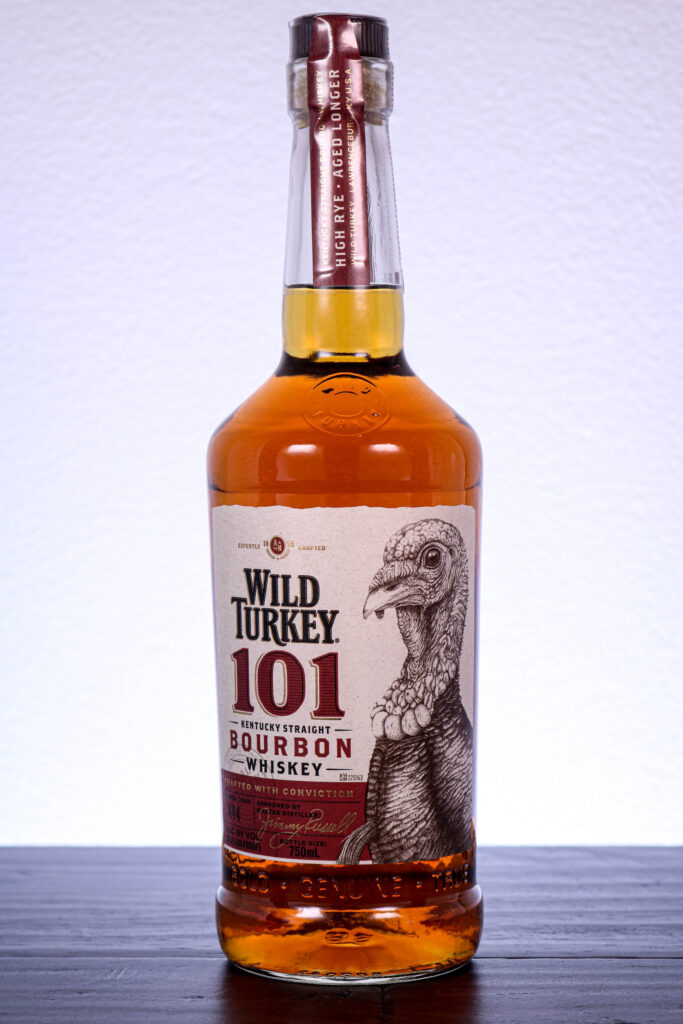
Whiskey is a broad and rich category that could fill an entire book (or bar), and often does. Starting off life similar to vodka – whiskey is distilled from grain – but is then aged in barrels. While there’s a ton of nuance here – for the purpose of this exercise you’re looking for a bourbon (51% corn, new oak casks – this is law – so look for “bourbon”)
Wild Turkey 101 – Balanced, full flavored, and layered in it’s complexity. The start is smooth, toasted, and caramelized without being sweet. The elements of spice, nuts, and subtle cigar box notes build as it opens up. For the price, the quality is standout.
Elijah Craig Small Batch – Elijah Craig Small Batch strikes the balance between rich flavors of caramels and oak while balancing evenly with spicy baking spices and notes of nuts. It works well in cocktails thanks to it’s broad and balanced flavor profile.
Alternative: Knob Creek 9 Year Small Batch, Maker’s Mark
Why not scotch or rye? While a compelling case could be made for rye – as it is often a component in Bourbon – it will make for spicier, potentially more aggressive version of cocktails that call for bourbon (which typically has a softer, less spicy edge from the corn base). And Scotch? To be honest, it just doesn’t function as a primary ingredient in many classic cocktails in a starter bar. If you must – I’ve put recommendations in below – but know these ingredients are optional for setting up your starter bar.
Whiskey – Scotch:
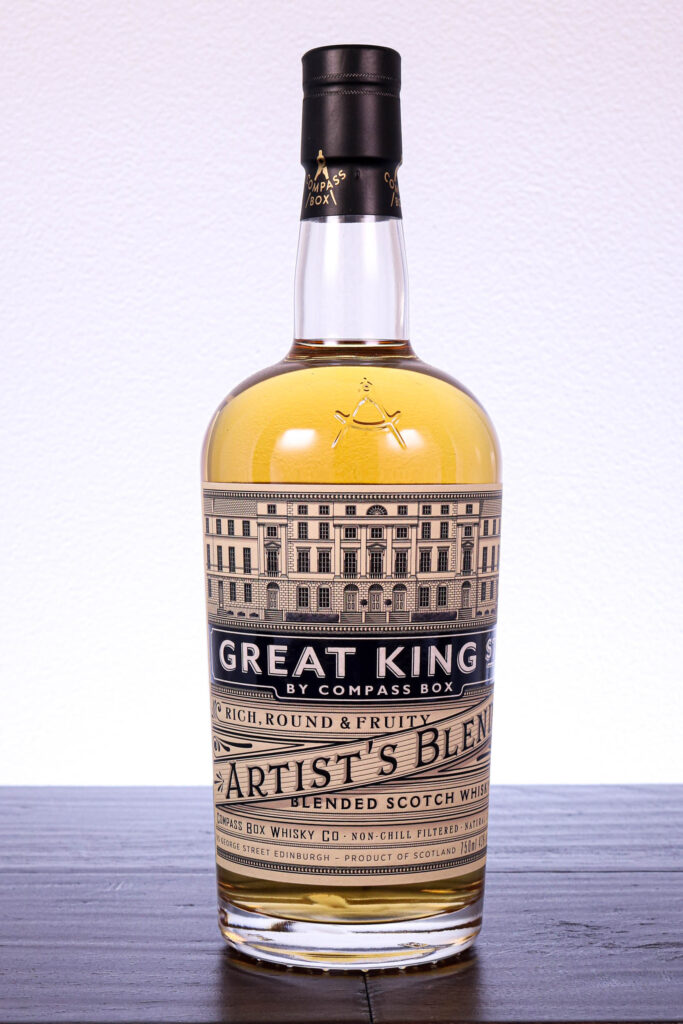
Glenlivet 12 – Has a nice, rich, round offering that demonstrates the initial complexity single malt scotch can offer without breaking the bank. The flavors of tropical fruits and vanilla are well balanced, and the nuttiness on the end offers a compelling reason to sip it.
Great King Street Artist’s Blend – Is a beautiful, yet simple scotch. The flavors of fresh apples and spice compliment richly against the cereal grain elements. Combined with the balanced and lingering finish, it ends up being easy to drink but in no way boring.
Alternative – Dewars White Label – Dewars is a friendly scotch that doesn’t smoke anyone out of the room – and plays well with others. There’s a nice amount fresh apple and subtle floralness to it. A gentle salinity and honey like hint gives it a nice foil for drinks like a Rusty Nail.
Whiskey – Rye:

Rittenhouse Bottled in Bond – This is our go to on rye. It positively sparkles at the $25 price point with a nutty nose, laced with baked vanilla, warm brown sugar, and hints of esthery banana, baking spices, and cedar box. The palate is a lovely mix of cocoa, black tea, almond extract, pepper, and hints of wood.
Alternative: Old Overholt
Orange Liqueur
Cointreau – This is the quintessential orange liqueur. With a good complexity orange peel flavors ranging from fresh to candied, it adds orange / complexity without adding color. The subtle sweetness also means it works well with bases and doesn’t over power the drink.
Alternative: Spend the money and buy the Cointreau.
Sweet Vermouth:
Carpano Antica – This beautifully spiced, luxuriously rich vermouth has been the positive darling of craft cocktails for the last several years, and with good reason. It’s tremendously well balanced, offering a sweetness to a cocktail that balances the base liquors with herbal and wine components while downplaying nothing. It’s an absolute stud.
Alternative: Cocchi Vermouth di Torino, Martini & Rossi
Dry Vermouth:
Dolin Dry Vermouth – While Dolin Rouge is certainly fine and good, Dolin Dry tends to be the go to for a good dry vermouth. A complex yet balanced profile it leans a little more into the fruity side while still being plenty herbal.
Alternative: Martini & Rossi
Bitters:
Angostura Aromatic Bitters – The institution of the bittering world – these bitters are a secret recipe that adds the seasoning to your drink. A bottle should last you a while – unless you’re running a bar (but they make big ones for that). Frequently this is referred to only as Angostura Bitters, even though they make other types of bitters. (You can find them at Amazon with their orange bitters*, but there’s a high likelihood that this will not be cheaper than your local grocery – no matter how much we’d appreciate you using our link)
Alternative: Fee Bros Old Fashioned Bitters*
Orange Bitters:
Both of the orange bitters listed really work well, and Regans’ has a slight edge here. That said, it’s the slightest of edges, so you can use what you can find or what’s more cost effective.
Regans’ Orange Bitters No.6* – These have quickly escalated to our go to bitters. The flavor is a solid mix of fresh and preserved oranges, but with a pleasant spicing.
Fee Bros Orange Bitters* – This has been our go to for pure orange flavor. This gives you that clean orange flavor with a little bitterness, and almost no spicing.
Alternative: Angostura Orange Bitters (a bit more spicy)
Simple Syrup:
Do not buy your simple. Instead follow the below recipe:
- 8 oz white sugar
- 8 oz water
- Optional – 0.5 oz vodka / neutral grain spirit (Everclear, Devil’s Springs, etc)
Combine white sugar and water in a medium sauce pan over medium-high heat. Stir to combine and occasionally to prevent sugar from settling on the bottom of the pan and burning. Once fully the sugar is fully dissolved, remove from heat and allow to cool. If adding vodka or neutral grain spirits, add them once cool. Pour into an airtight vessel and refrigerate.
Refrigerated I have found that simple with a small amount of everclear or vodka can last up to 6 months, but due to the alcohol and high sugar content (which also inhibits bacterial growth) – you might be able to keep it longer. In the event you see any whispy growths, mold, or notice any off smells or flavors – discard immediately. If you have not added alcohol, discard after a month.
As the ratio is 1:1 feel free to scale this recipe up or down as needed.
Although it goes without saying – do not use this simple in any drinks for children, designated drivers, or those abstaining from alcohol – if you have chosen to add spirits.
Juices & Fruit:
To start – we ALWAYS recommend using fresh fruit juices and all our recipes are based off fresh juices (unless otherwise specified). The impact that using fresh juice has on quality is critical!
Citrus Juices are a key component to any drink, and can typically make up anywhere from 10 – 25% of the volume of a cocktail. It’s therefore super important that you use quality juices. For lemon and limes, the general rule is always use the fruit. There is no sufficiently comparable juice available on the market.
Orange, pineapple, and grapefruit juices are a bit more difficult. Due to the cost of the fruit themselves, and that you may not have the right equipment to process them (looking at you pineapple), you might be tempted to use an alternative. That’s ok – we’ve been there, and when you’re just starting out this can help.
While you can typically find some really high end – cold pressed juice at Whole Foods, you shouldn’t feel shame grabbing a Simply Orange or Dole Pineapple. These ingredients are workhorses. Don’t be fooled though – the impact on quality is substantial compared to using the real thing!
A final note on this – I haven’t found a palatable grapefruit substitute. Simply Grapefruit is really more of the kind of thing in a pinch than a recommendation – and you should try to go fresh here – like with the lemons and limes.
Finally – for lemons, limes, and oranges – these are going to be some of the most common garnishes you’ll end up using. So having the actual fruit on hand is essential.
Brandied Cherries:
Luxardo: These cherries are THE gold standard. Subtly sweet, a touch spicy, inky black, well proportion and textured – they add elegance to a drink. They aren’t cheap though – expect to pay upwards of $18 for a bottle.
Trader Joe’s: These cherries are my absolute favorite when it comes to value. They don’t have the same depth as the Luxardo cherries, but at only $3.50 a jar – they reach 80% of the character. Where they lack is a slightly larger size and firmer texture, and less spiciness. That said, for an every day cherry – and way to stretch your Luxardos – consider these a great alternative.
Ginger Beer / Coke
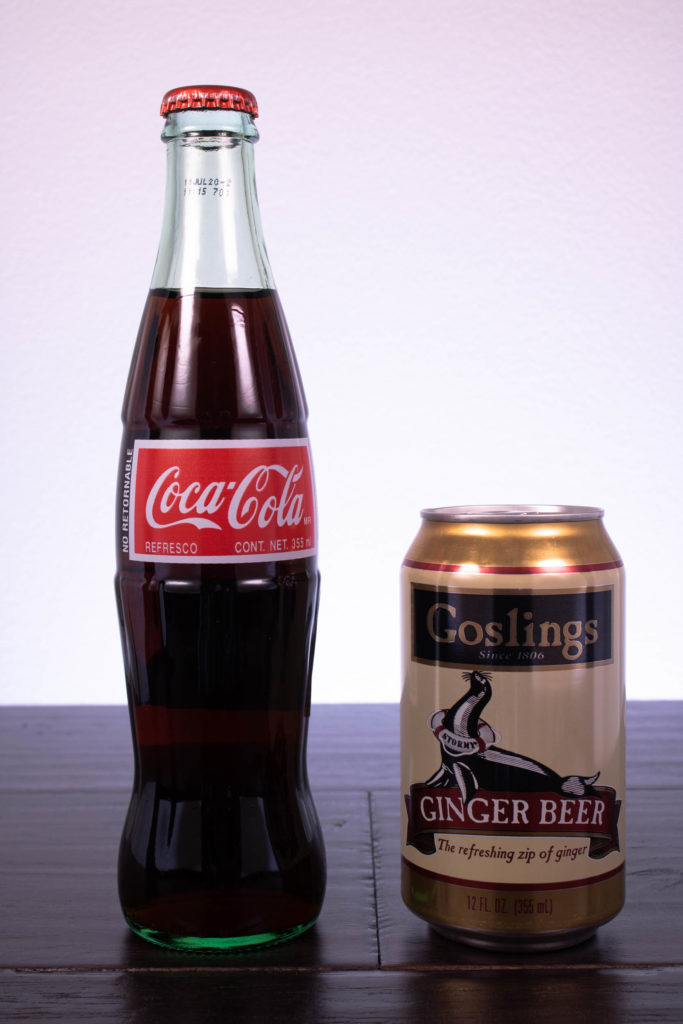
Let me start by saying – buy the Mexican Coke. This sounds absurd – but it really makes a massive difference – contributing flavors like toasted sugar and caramel to the standard Coke flavor. It’s really what you always hoped Coke would taste like. You’ll never see a Cuba Libre the same way again.
Although both ginger ale and coke are quite common as mixers in the bar, most classic cocktails won’t use them. That said – it’s still worth keeping Coke on hand to make a whiskey and coke or ginger if your guest is so inclined (and isn’t to be dissuaded into trying something else). Coke is the gold standard here – and you’ll basically use it in the Cuba Libre if you have it around.
Ginger beer (ginger ale’s more spicy – actually fermented from ginger – forefather) however is used in both Moscow Mules & Dark and Stormy cocktails – so if you plan on making either – this is a great choice. In my opinion, it’s also preferable in sweetness to ginger ale – and plays excellently in mocktails. Our go to brand is Goslings, but there are plenty of choices on the market.
Tonic Water / Club Soda:
Keep these around the house – and feel free to buy the supermarket generic. Our local Giant Eagle sells serviceable bottles for 5/4 on sale or 95 cents a piece. If you want to splurge on the tonic – Fever Tree and Fentiman’s both offer upscale alternatives at 2 – 4x the price – but a markedly higher complexity.
Kitchen Basics:
In addition to the above, you should probably have:
- Sugar – White
- Kosher Salt
- Honey
Theoretically, these are all in most people’s homes already – but if you don’t have them, you probably should.
This bar is a good starter set – and opens up a realm of possibilities based on adding other bottles. For example, adding:
- Campari – you can now make a Negroni, an Old Pal, and Boulevardier
- Champagne and Sugar Cubes – you’ve unlocked the French 75, the Champagne Cocktail, and the French 95
- Mint – Mint Julep and Mojitos are both on the menu.
The sky is really the limit, and the list could go on and on. Feel free to swap out bottles as your run out to try new spirits or add new ingredients. Half the fun is in experimenting. No matter what you choose to stock with, this basic list will help put you on a path to have the bottles for beginning a home bar that’s sure to impress your friends.
Update History
August 2023:
- Separated – Bottles for Home Bar setup from Ingredients (simple, citrus, etc)
- Added – Table for Liquors, Additional Ingredients, and Total Costs (Initial Costs $268 for liquor, $55-72 juices, syrups, etc, total $323-$340 pre-tax, no glassware)
- Added – Regans’ Orange Bitters as a recommended Orange Bitters
- Added – Gin & Tonic, Saratoga, Highball to cocktail list.
- Updated – Siete Leguas Blanco Picture added, Gran Centenario Plata picture removed
- Added – Affiliate Links and Affiliate Link Disclosures – Please consider supporting us by making your purchase through our affiliate links!
- Clean Up – Various Links
July 2022:
- Added – Link for White Lady Cocktail
- Upgraded – Siete Leguas Blanco & Olmeca Altos Plata to top recommended blanco tequilas.
- Downgraded – Gran Centenario Plata from top recommended Tequila Blanco (still recommended)
- Added – Pasote Blanco to recommended tequilas
- Added – Reposado Tequilas (Siete Leguas & Olmeca Altos)
February 2022:
- Added – Summum & Russian Standard Vodka to Vodka
- Removed – Russian Standard Vodka in support of Ukraine
- Added – Doorly X.O. to Aged Rum
- Added – Lustau Brandy de Jerez Solera Reserva to Cognac / Brandy
- Downgrade – Christian Brothers VS changed to alternative in Brandy.
- Upgraded – Wild Turkey 101 is move up to a primary recommendation in Bourbon
- Added – Knob Creek 9 Year Small Batch Bourbon to Alternative Bourbons
- Added – Glenlivet 12 to Scotch
- Upgraded – Compass Box Great King Street Artist Blend upgraded to primary in Scotch.
- Downgraded – Dewar’s White Label downgraded to alternative in Scotch
- Added – Rusty Nail link
December 2021:
- Added – Tanqueray London Dry Gin to Gin
November 2021:
- Updates to links and wording.
August 2021:
- Added and Revised Recommended Equipment
- Added – Link to Cointreau
- Cleaned up sectioning
July 2021:
- Added – Links to Bebbo, The Derby, Tom Collins, Whiskey Sour, Gin Rickey, and Moscow Mule. Add Link to Gosling’s Black Seal Rum Review.
May 2021:
- Added – Link to 2021 Cinco de Mayo Blanco Tequilas
- Correction – Update Centenario to Gran Centenario
April 2021:
- Added – Sobieski (Vodka), Goslings (Black Rum), Updated Links for Reviewed Bottles
- Removed – Ti’ Punch
- Our reasoning behind removing Ti’ Punch is that it works best Rhum Agricole. We do not recommend starting your bar with a bottle of Rhum Agricole, and for that reason, we have removed it.
March 2021:
- Correction – Removed the OP from Christian Brothers VSOP. Now correctly reading Christian Brothers VS
- Added – Updated links for reviewed bottles.
August 2020:
- Removed – Gimlet from drink list.
- Removed – Kirk and Sweeney 12 due to price changes make it prohibitively expensive based on the versatility it delivered.
